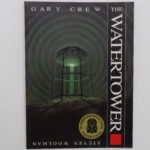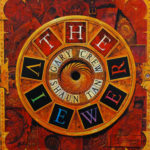Visual Literacy: Can Picture Books Be Suitable for Older Readers?
Picture books for older readers (Grade 5 through to secondary school) have proven to be a valuable literacy tool, and the NCACL’s Picture Books for Older Readers (PBOR) database provides a resource for teachers, librarians, caregivers, students and researchers, to identify such books for learning purposes. The PBOR database will be launched in July 2023, and has been put together by a team of children’s literature experts. Each book includes links to the Australian Curriculum and free online resources.
Included in the database are the works of esteemed Australian children’s book author Gary Crew, who has written several highly successful picture books for older readers.

Emeritus Professor Gary Crew
In this blog post, Gary shines a light on how he first came to write picture books for older readers, and the inherent value of these books in promoting literacy skills in children of all ages and abilities.
In her wonderful book ‘Visual Thinking’ Riverhead books, 2022. p. 4. Dr Temple Grandin comments ‘the kids who should have grown up to invent (this) equipment are often considered poor performers, academically or behaviourally, and are shunted into special education. But many of them are simply visual thinkers who are being screened out because the current curriculum favours verbal, linear thinkers who are good at taking tests.’ How true this is!
I began teaching high school in 1974 having never heard of ‘visual thinking’ and found to my astonishment that my class of 15-year-old boys who were print illiterate LOVED reading visuals in magazines. I put to my publisher that I could write illustrated books with mature content and sophisticated illustrations to suit these ‘visual readers’ and the books took off like rockets. I then discovered the work of Chris Van Allsburg and realized that he had been writing and illustrating for this audience for years. The truth is, visual images (eg: Lascaux cave art) preceded print text by thousands of years but for some reason publishers (and illustrators) got it into their heads that picture books were for ‘little kiddies’. I have written many ‘older reader’ illustrated books which have become international best sellers.
 Examples are ‘The Watertower’ (Crew and Woolman) and ‘The Viewer’ (Crew and Tan). These books excite the visually literate (especially teenaged boys) who find the linear confines of paragraphed, alphabetical print text threatening and dull. In reading and interpreting the illustrated book they find a form of literacy previously denied them.
Examples are ‘The Watertower’ (Crew and Woolman) and ‘The Viewer’ (Crew and Tan). These books excite the visually literate (especially teenaged boys) who find the linear confines of paragraphed, alphabetical print text threatening and dull. In reading and interpreting the illustrated book they find a form of literacy previously denied them.
Teachers are encouraged to search out illustrated books for older readers and they will discover an entirely new range of ‘bright’ students in their classes.
Grandin, Dr Temple. 2022. Riverhead Books. ‘Visual Thinking: The Hidden Gifts of People Who Think In Pictures, Patterns and Abstractions.’
Posted by: NCACL | Published: 30 Apr 2023

0 Comments
There are currently no comments, be the first to leave one